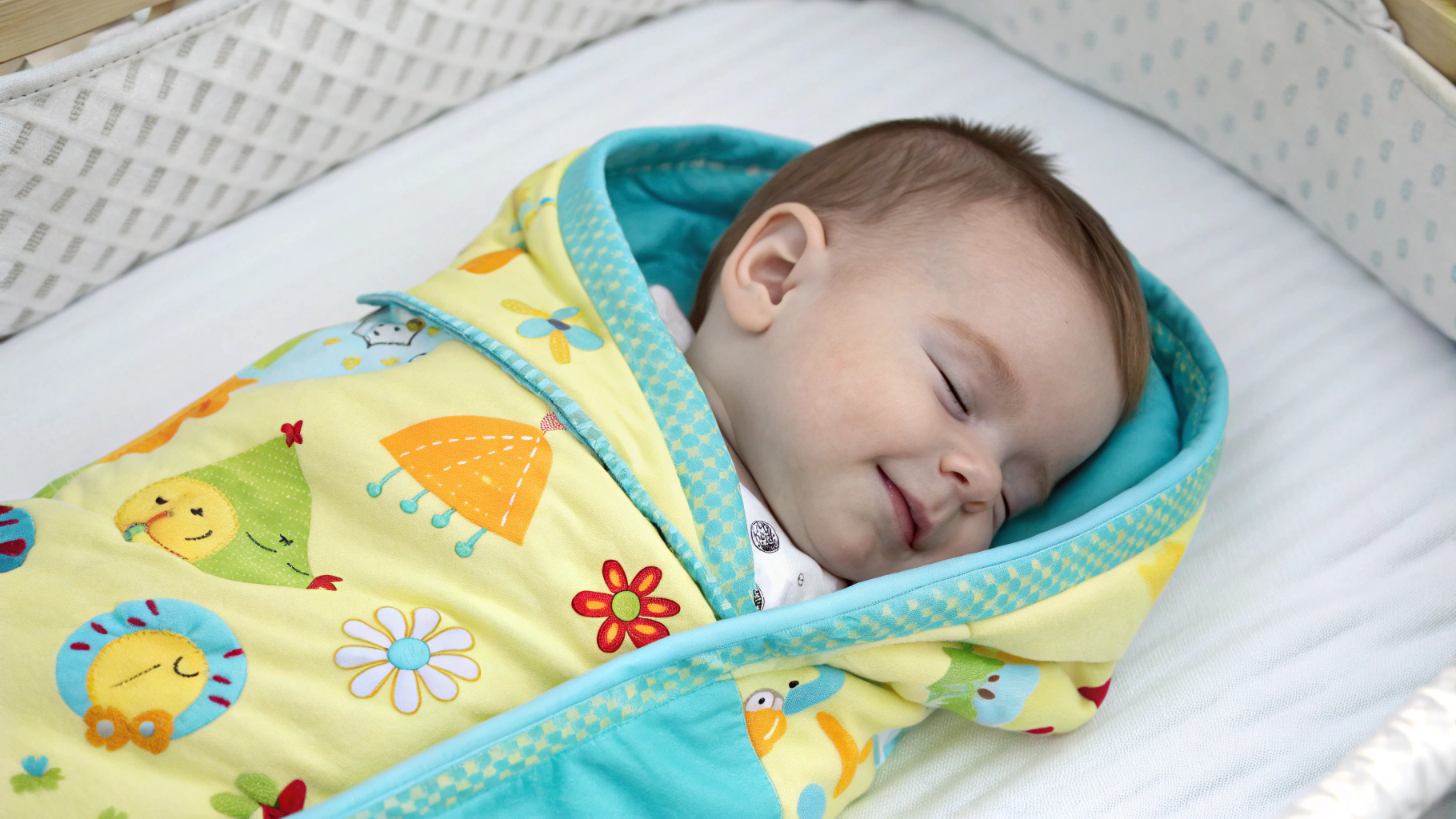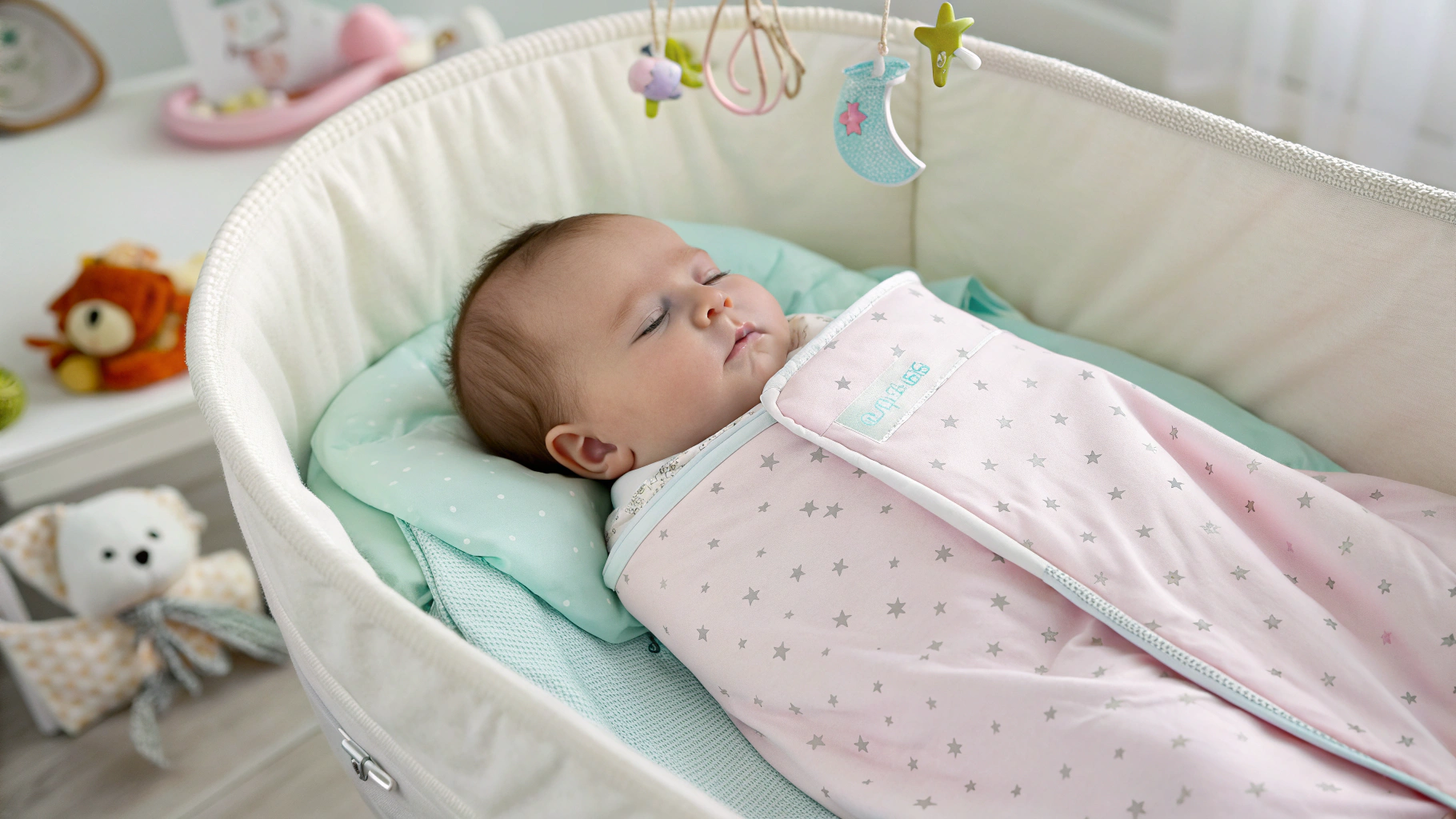I still remember that first blazing summer after my son was born. We had this adorable nursery with pastel curtains and a crib that matched the Pinterest board version of my life. I thought I had all the gear figured out—crib sheets, onesies, pacifiers in triplicate. But when it came to sleep, the heat threw me for a loop. He’d kick off the blanket every five minutes, sweat through his clothes, and I was left pacing the floor at 2 a.m. Googling “how do babies sleep in summer without blankets?” That’s when I discovered the magic of the summer sleep sack baby trend.
If you’re reading this, I’m guessing you’ve had similar worries—keeping your baby both safe and comfortable during warm nights. And trust me, there’s no bigger relief than finally laying them down without stressing over overheating or loose blankets. This guide is my well-tested and data-backed breakdown of everything you need to know about the right sleep sack for summer.
Table of Contents
Why Summer Sleep Sacks Matter
You already know blankets and newborns don’t mix. But in summer, the stakes feel higher. Overheating is a real risk for infants. According to the American Academy of Pediatrics, room temperature should ideally stay between 68–72°F (20–22°C) for safe sleep. Easier said than done when you live in a humid climate or a house that doesn’t cool off until midnight.
That’s where a summer sleep sack baby comes in. It’s a wearable blanket designed for breathability, freedom of movement, and—most importantly—peace of mind for you. Instead of worrying if the blanket slipped off or tangled, you simply zip them in and let them snooze.
Think of it as that sweet spot: cozy but not sweaty, snug but not constricting. You’ll notice the difference instantly when your little one finally sleeps longer stretches because they’re not fussing about the temperature.
Key Features to Look For
Here’s the thing: not all sleep sacks are created equal. Picking the right one in summer comes down to a few essentials.
Lightweight Fabrics
Opt for cotton muslin, bamboo, or a cotton-poly blend. These materials allow airflow and wick away moisture. Muslin, in particular, is a favorite because it softens with every wash.
TOG Rating
TOG measures warmth in fabric (Thermal Overall Grade). For summer nights:
- 0.2–0.5 TOG = hot climates or no AC
- 0.5–1.0 TOG = average summer nights
Skip heavier sacks (2.0 TOG or higher) unless you’re in a cooler environment with AC blasting.
Easy Access Zippers
Middle-of-the-night diaper changes are easier if you’ve got a two-way zipper. No one wants to fight with snaps at 1 a.m.
Room to Kick
Babies need hip-healthy space to stretch their legs. Look for sacks designed with wider bottoms, so you don’t risk restricting growth.
My Top Picks for Summer
I’ve tested more sacks than I care to admit—some were lifesavers, others ended up crumpled in a closet. Here are the ones that stood out.

Aden + Anais Muslin Sleep Sack
- Pros: Super breathable, classic muslin weave, tons of cute patterns.
- Cons: Shrinks a little in the wash, runs pricier than generic brands.
Burt’s Bees Baby Wearable Blanket
- Pros: Organic cotton, durable, soft after repeat washes.
- Cons: Slightly heavier feel, so not ideal for super-hot nights.
Amazon Essentials Lightweight Sack
- Pros: Affordable, easy to find, comes in multipacks.
- Cons: Fabric isn’t as long-lasting as bamboo or muslin brands.
Kyte Baby Bamboo Sleep Sack
- Pros: Ultra-soft, moisture-wicking, stretches a bit for growing babies.
- Cons: Expensive—definitely more of a splurge item.
Practical Advice: How to Use a Sleep Sack in Real Life
If you’re new to this, you might wonder how to make it all work smoothly. Here’s the quick and dirty version:
- Set the Room Temperature: Use a fan or white noise machine with a circulation feature. Avoid direct air blowing at the crib.
- Dress Smartly: Pair a low TOG sack with just a diaper or a lightweight cotton onesie. Think: “layer for baby like you’d layer for yourself on a warm night.”
- Check for Overheating: Touch their neck or chest. If it feels damp or hot, scale back clothing. Hands and feet are naturally cooler, so don’t gauge just from those.
- Routine Is King: Slip into the sleep sack as part of the bedtime ritual—story, cuddle, zip, lights out. Babies learn this cue fast.
Budget-Friendly Tips & DIY Hacks
Don’t want to shell out $50 on multiple sacks? I hear you. Here are some clever cost-savers:
- Buy in sets during seasonal sales; summer collections drop in spring, so that’s usually the best time.
- Go neutral colors so you can reuse across siblings.
- DIY: If you’re crafty with a sewing machine, repurpose lightweight muslin swaddles into a sack using a free online pattern (plenty float around in mom forums).
- Rotate two sacks so you always have one clean—no need for a stack of seven.
FAQs About Baby Summer Sleep Sacks
Q: Can babies overheat in a sleep sack?
A: Yes, but only if you pick the wrong TOG or overdress them underneath. Always feel their chest/back to check.
Q: When should I stop using a sleep sack?
A: Most brands go up to toddler sizes (18–24 months). Stop once your little one starts unzipping themselves or shows preference for blankets.
Q: What if my baby hates being in a sack?
A: Some babies need time to adjust. Start with short naps before transitioning to overnight sleep. Choose a roomy design so they don’t feel trapped.
Q: Is a baby sleeping bag different from a sleep sack?
A: They’re essentially the same, though “sleep sack” is more common in the U.S., while “sleeping bag” gets used internationally.
Final Thoughts
Finding the perfect summer sleep sack baby option isn’t just about convenience—it’s about safe, restful nights for both you and your little one. I can vouch from countless midnight wakeups that once you nail down the right fabric, TOG, and fit, things get easier.
So give yourself a little grace. Parenting through hot, sticky nights is no small feat. With the right sleep sack, you’ll have one less thing to stress about—and maybe, just maybe, you’ll finally get that elusive five-hour stretch of sleep.
And hey, when you’re tiptoeing out of the nursery after zipping them snugly into a breathable sack, you’ll know you nailed it.
👉 Your Turn: Have you tried a lightweight sleep sack in summer yet? What’s been your go-to solution for keeping baby cool? Drop a comment below—I’d love to hear what’s worked (or hasn’t!) for you.
